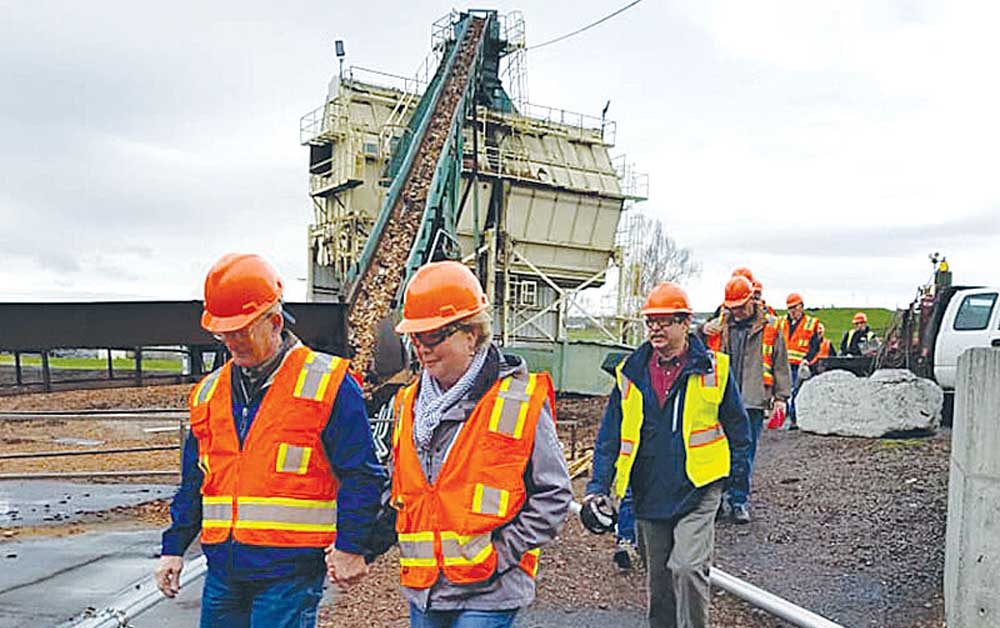Public will get say on Pendleton public transit
Published 5:17 pm Wednesday, October 14, 2015
Pendleton city officials and their consultants already have some ideas regarding how to update the city’s transportation service plan, but they want public input before choosing which direction to go.
The city held its first open house for the update Wednesday, which was preceded by a committee meeting earlier in the day.
All of these meetings are in service of updating the plan, with a focus on improving pedestrian, cyclist and transit accessibility.
Consultants fleshed out their ideas during the committee meeting, especially in the area of public transit.
Stephanie Wright, a senior associate with transportation consultant Nelson/Nygaard, provided information on the current state of Pendleton public transportation system — a hodgepodge of services shared by the city and the Confederated Tribes of the Umatilla Indian Reservation.
In addition to covering five counties and 14 cities in Eastern Oregon and Washington, Kayak Public Transit has several fixed routes that run though Pendleton.
While Pendleton’s downtown is well covered, residential areas like North Hill and South Hill are virtually unreached. Additionally, significant destinations like Blue Mountain Community College, Eastern Oregon Correctional Institution and Eastern Oregon Regional Airport are also uncovered by Kayak. St. Anthony Hospital has a flag stop, meaning passengers can only stop there by request.
CTUIR Planning Director J.D. Tovey said the tribal government estimates 104,000 riders will use Kayak this year.
While Kayak’s focus on inter-city travel has meant a limited coverage area in Pendleton, the whole city is covered by the city-sponsored Let’Er Bus system.
Let’Er Bus is an umbrella for seven programs, but three on-demand programs get the most usage — senior and disabled taxi ticket vouchers, daily van service and Elite transit tickets.
The daily van service, a dial-a-ride taxi service that costs $1 per one-way trip, proved so popular that the city contracted with Elite Taxi in 2013 to create an additional taxi service with an increased ticket price of $3 and a six-trip limit.
The Let’Er Bus system has grown in popularity since its inception in the mid-1990s, going from 1,500 in 2000 to 36,600 in 2015.
With increased demand comes increased cost — from $9,609 in 2000 to $226,847 in 2015, although the Oregon Department of Transportation’s Special Transportation Fund covers most of that cost.
A consultant-created map showed Pendleton’s transit dependent population was concentrated in the downtown, South Hill and Sherwood Heights areas.
Wright said the city would need public input to decide whether public transit should be a priority, and if so, whether a fixed-route or on-demand transportation would be preferable.
To gather input, the city will hold several open houses and is distributing a survey.
If community members wanted more fixed-route options, Wright suggested working with Kayak.
Since the bus system relies mostly on state and federal funds, Tovey said one of Kayak’s longterm goals is to “graduate” from CTUIR governorship to a regional transit board that would oversee both local and intercity routes.
The committee also continued to explore how to create more cycling and pedestrian opportunities.
Consultant Kittelson and Associates measured the best and worst streets using a metric called Level of Traffic Stress (LTS), which evaluates roads on a 1-5 scale based on speed limits, travel lanes, and bicycles lanes to gauge the level of comfort a cyclist would feel on that street.
Unsurprisingly, high-traffic streets like Westgate, Southgate and Southeast Court Avenue were rated the worst for cyclists.
“If I could put (Southgate) at a LTS 6, I would,” said Evan MacKenzie, Pendleton city planner and avid cyclist.
Kittelson associate planner Matt Hughart said the presence of bike lanes didn’t always spare streets from poor assessments, citing Southgate and Tutuilla Road.
Some streets had so much car traffic, in addition to being positioned on steep inclines, that Hughart suggested it might just be better to find a parallel street for cyclists to travel on instead.
Before the meeting, the city’s consultant team met with Pendleton High School and Sunridge Middle School students to find places in need of more sidewalks.
Some of the roads the students identified were Riverside Avenue and Highway 11.
Hughart also presented some potential extensions of the Pendleton River Parkway to the east, west, south and a parallel dirt or gravel path on the north side of the Umatilla River.
———
Contact Antonio Sierra at asierra@eastoregonian.com or 541-966-0836.






